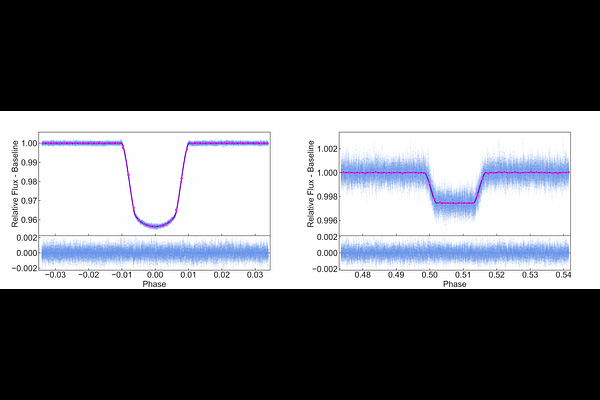BEBOP VII. SOPHIE discovery of BEBOP-3b, a circumbinary giant planet on an eccentric orbit

BEBOP VII. SOPHIE discovery of BEBOP-3b, a circumbinary giant planet on an eccentric orbit
Thomas A. Baycroft, Alexandre Santerne, Amaury H. M. J. Triaud, Neda Heidari, Daniel Sebastian, Yasmin T. Davis, Alexandre C. M. Correia, Lalitha Sairam, Alix V. Freckelton, Aleyna Adamson, Isabelle Boisse, Gavin A. L. Coleman, Georgina Dransfield, João Faria, Salomé Grouffal, Nathan Hara, Guillaume Hébrard, Vedad Kunovac, David V. Martin, Pierre F. L. Maxted, Richard P. Nelson, Madison G. Scott, Owen J. Scutt, Matthew R. Standing
AbstractPlanetary systems orbiting close binaries are valuable testing grounds for planet formation and migration models. More detections with good mass measurements are needed. We present a new planet discovered during the BEBOP survey for circumbinary exoplanets using radial velocities. We use data taken with the SOPHIE spectrograph at the Observatoire de Haute-Provence, and perform a spectroscopic analysis to obtain high precision radial velocities. This planet is the first radial velocity detection of a previously unknown circumbinary system. The planet has a mass of $0.56$ $M_{Jup}$ and orbits its host binary in 550 days with an eccentricity of 0.25. Compared to most of the previously known circumbinary planets, BEBOP-3b has a long period (relative to the binary) and a high eccentricity. There also is a candidate outer planet with a $\sim1400$ day orbital period. We test the stability of potential further candidate signals inside the orbit of BEBOP-3b, and demonstrate that there are stable orbital solutions for planets near the instability region which is where the Kepler circumbinary planets are located. We also use our data to obtain independent dynamical masses for the two stellar components of the eclipsing binary using High Resolution Cross-Correlation Spectroscopy (HRCCS), and compare those results to a more traditional approach, finding them compatible with one another.